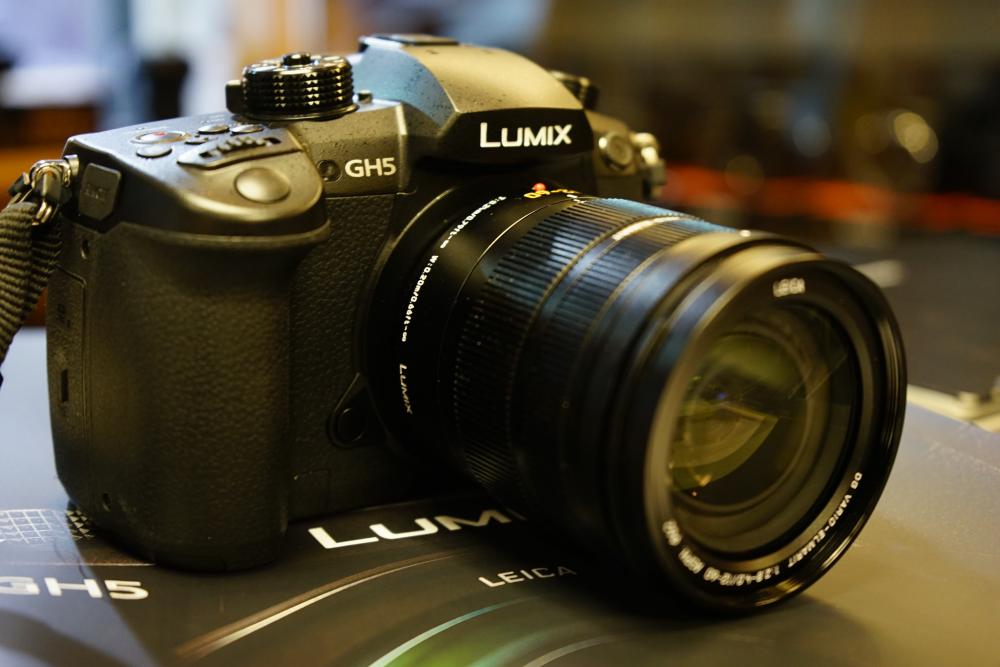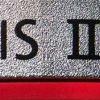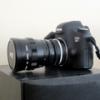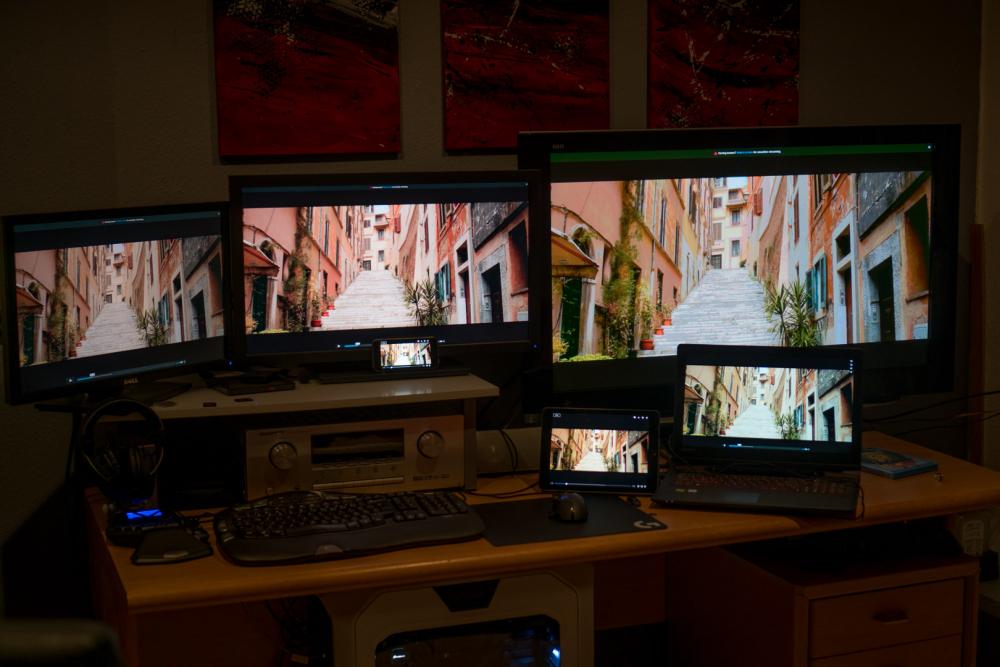Leaderboard
Popular Content
Showing content with the highest reputation on 03/01/2017 in all areas
-

Cinema5D slates the Panasonic GH5, calls V-LOG and 10bit "unusable" - They're wrong
John Matthews and 4 others reacted to Andrew Reid for a topic
5 points -

5K RAW video on the Olympus E-M1 II usable for short clips!
kaylee and 4 others reacted to Andrew Reid for a topic
Just look how close we are to continuous 5K RAW on this $2000 camera... Read the full post here5 points -
Good choice, you won't be disappointed!3 points
-

Camera advice. Best image, ignore rest. $3000
Riadnasla and 2 others reacted to webrunner5 for a topic
Yeah a C100 mkII has to be at the top for the money. It is just laid out so well, both for tripod and run n gun, no way you can beat it if you don't need 4k. And since it is down sampled from 4k to 1080p in camera that saves a step in post. ISO 320 to 80,000 is crazy good, built in ND filters, and to be able to record two different formats at the same time is a crazy good idea. Yep, I have made up my mind, that is the camera I am buying. I don't want to have 10 things hanging off a camera to make it work.3 points -

Samsung NX Speed Booster
SMGJohn and 2 others reacted to lucabutera for a topic
3 points -
I've used the C100 (Mk1) and bmpcc a bunch. The C100 is the best all around camera for sure, such a delight to use and the quality really punches above it's weight. When it fires on all cylinders, I still prefer the pocket image. But you can't discount the "not getting in your way" factor of making a good image, and that's where the C100 is second to none I think.3 points
-
lomo 35mm fullframe )3 points
-
My schedule is full. I enjoy my subjects. My bank accounts are healthy. My wife is happy.2 points
-

Camera advice. Best image, ignore rest. $3000
webrunner5 and one other reacted to Shield3 for a topic
My pick is the C100ii used if you can find one for $3k. Part of the image is FOCUS, and it has the DPAF. Part of the image could be 30p/60p, which it has (and the 1dc does not in 4k). Love the 5d3 raw image as well but man it's just too flaky and I don't trust it 100%. Audio is part of the overall image too, as well as built in ND's - so to me XLR/ND, Canon C-Log, reliability and gorgeous 1080 24/30/60 make the C100 the winner. Battery life, great EVF and EF mount (and face tracking with some EF-S lenses) just add icing to the cake. Add a cheap recorder for more flexibility in post. Skin tones too. Also long record times without overheating, and the simplest damn joystick to instantly toggle between ISO/WB/shutter/F-stop. I don't really have to think that much when I pick up the C100 II - I like that. But I haven't shot the BMPCC or some of these older Sony/Red cameras - so what do I know?2 points -
As I previously described, deployment of H265/HEVC has been slowed for non-technical reasons. There have been major disputes over licensing, royalties and intellectual property. At one point the patent holders were demanding a % of gross revenue from individual end users who encode H265 content. That is one reason Google developed the open source VP9 codec. The patent holders have recently retreated from their more egregious demands, but that negatively tainted H265 and has delayed deployment. The licensing and royalty issue is why the evaluation version of Premiere Pro does not have H265. VP9 is replacing H264 on Youtube, and they will transition to VP9's successor AV1 soon. AV1 is also open source, not patent-encumbered, and significantly better than H265/HEVC: http://www.streamingmedia.com/Articles/Editorial/What-Is-.../What-is-AV1-111497.aspx Skylake's Quick Sync has partial hardware support for VP9 and Kaby Lake has full hardware support, but I don't know about AV1.2 points
-

2nd of March: BlackmagicDesign Camera & DaVinci Resolve Press Conference
Kisaha and one other reacted to Don Kotlos for a topic
Let them choose the resolution, but let me choose the shutter: Global please2 points -
Yes, I'm also more interested in scaling, motion, etc. As an example, playing the same video via my graphic card to the TV has a slight stutter, via I/O card out of DaVinci Resolve it runs fluid. Color is kinda subjective, everyone sees it slightly different and then add different tastes on top. I'm less sensitive to that but I'm currently really concerned about the bad scaling I mentioned in my post. What's the point of shooting 2160p for a pristine 1080p master to have it then scaled to death by a QHD display? Absolutely true. With the problem on top that you never know if the viewer's browser actually respects embedded color profiles or not. Attack of the OompaLoompa imminent.2 points
-
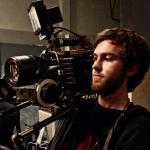
Olympus E-M1 II and Rode Stereo VideoMic X first impressions
Don Kotlos and one other reacted to Dane for a topic
Got the camera in the mail today, immediately had to test the 60fps raw burst mode. I used a SanDisk Extreme PRO 300MB/s card and was amazed how fast the bursts were being written to the card (over 48 frames of 5K raw in less than 8 seconds). Raw processing in After Effects takes forever, took about 2 hours to render ~34 seconds. No raw color adjustments, just rendered the image sequence and applied warp stabilizer to the shot of the power lines. Kept all the missing frame flashes as well as the frames it records after the 48 frames of 60p (pretty cool speed up effect it gives). I shot another 2000+ frames which I will render out and share here soon. Used a Speed Booster Ultra w/ Zeiss zf 50mm 1.4. Also, I tried to connect my Atomos Shogun via HDMI and was able to get clean signal for 4k 30p and 1080 60p but it says connection error when I try Cinema 4K. I have the latest firmware so not sure what the problem is...?2 points -
Yep, seems most of the olympus/panasonic lenses perform well wide open. I can vouche for the panny 20mm f1.7 But I've also read reviews and seen footage from: Panasonic 12 f1.4 Panasonic 15 f1.7 Panasonic 25 f.14 Panasonic 42.5 f1.2 / f1.7 Sigma 30 f1.4 Olympus 12 f2.0 Olympus 17 f1.8 Olympus 45 f1.8 Olympus 75 f1.8 All seem to perform pretty well wide open. The Rokinon 12 f2.0 that I have is also pretty good at f2, especially for the cost. So there's lots of options.2 points
-
@Phil A my thoughts are that it sucks, as you demonstrated in your photos, but you gotta deal with it and of course that phenomenon is 100% the same for still images... without involving any of the complexity of motion pictures, i have a frustrating time finding a happy medium for a jpg i want to post online across the screens of the consumer devices that i personally own – theyre wildly different2 points
-

What devices are you using to make judgements about tests/comparisons
jonpais and one other reacted to fuzzynormal for a topic
I do indy stuff for broadcast and I can tell you I don't obsess over IQ. The shows I've shot and broadcast this year look better than anything that came down the pipe from the guys doing productions in-house with their high end production gear. That result has nothing to do with cameras or properly calibrated displays. Obsession over other elements of the production, like story, visual compositions, cinematography, and editing, is much more justified. Calibrate your own stuff, do your best, and don't worry about it.2 points -
Filmed this a couple weeks ago using the Canon 1DX Mk2 and a Google Pixel XL on a DJI Osmo Mobile. This combination did prove interesting when it came time to CG the footage. I also forgot that when I filmed with the Canon I used a custom baked in picture profile, so that complicated matters even more. The Canon's files did seem to handle the CG better, as they could take much more processing than what the smartphone footage could. Working with these two very different formats was an eye opening experience. Both had their strengths and weaknesses. Anyway it was a fun project and I'm happy I had the chance to film a little something. Comments welcomed.1 point
-
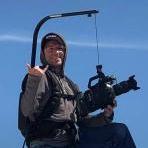
2nd of March: BlackmagicDesign Camera & DaVinci Resolve Press Conference
webrunner5 reacted to Geoff CB for a topic
Please give me a BMMCC with a 2.5K or 3K sensor. I don't need 4K, just more than 2K for some slight post work.1 point -
Also, if i'm not wrong, they don't really tell how the lut and grading was applied. For example, if they just plaster it over the image in Premiere with Lumetri, there may be some problems like those if the sequence isn't at "Maximum Bit Depth". That is even seen if you're using a native ProRes file, with a h264 file should be even worst. You can see the difference in a fast example i made with a 10bit prores v-log file from a GH4 (recorded with Ninja Assassin), left without "Maximum Bit Depth", right with "Maximum Bit Depth" active. p.s: I just applied the native "Alexa_Default_LogC2Rec709" from Lumetri1 point
-
I was expecting this and I think it is a major mistake to release the GH5 without the 400Mbps update. First impressions mean a lot and everyone is eager to read the early reviews. Once people see "10bit GH5 worth nothing" a few times it will be hard to make them forget it half a year later even if the new firmware brings a completely new experience. Think of the Ursa Mini 4.6K and how bad the first batch was. Rental houses even state it's not suitable for professional work even today..1 point
-
Panasonic GH5 - all is revealed!
Simon Shasha reacted to SuperSet for a topic
I'd like to hear Luke Neumann's take on that Cinema5d article1 point -

Petition for Samsung NX1 hack
Marco Tecno reacted to lucabutera for a topic
After reading this article, you wait before switching to GH5 https://***URL not allowed***/panasonic-gh5-lab-review-10-bit-flaws-vlog-free-gh5-lut/1 point -
My thoughts on the Kipon Medium Format "Speedbooster"
Adept reacted to Mattias Burling for a topic
Update 4: Film vs Digital Today I did a little test with the adapter vs my Mamiya 645 Film Camera. The main point of the test was to make sure the camera worked for the same reason as earlier (24h return policy). So no, its not a proper shootout. I used a roll of expired Kodak T-Max400 that came included, no idea how the seller had stored it. Developed a few hours ago in Tetenal Ultrafin and used my crappy flat bed scanner for speed. First of all, some parameters: Same lens on both cameras. Same ISO, Aperture and Shutter speed. I did NOT shot from the same distance. I did NOT focus at the same point (to dark). The Film was Kodak T-Max 400 Developed and quickly scanned by me. The film has been adjusted in post. The Digital has had a “Kodak T-MAx400” Preset added. One question Ive gotten before is if the adapter adds barrel distortion. Looking at the door behind me on the mirror selfie I might say, no, it was already there. Another note is the bigger image from the Mamiya which has different aspect ratio and crop (x0.62 vs x0.7). But I can also bee exaggerated due to different distances. Might be the Mamiya viewfinder that makes me back up a bit. Will test again. Sony Selfie Mamiya Selfie GP with the Sony GP with the Mamiya The Mamiya with the Sony The Sony with the Mamiya BTW, shot a bit of video yesterday. Pulling focus at f1.9 went pretty ok and the added weight reduced shakiness by a lot. Hopefully I will have a video test done this weekend.1 point -

Camera advice. Best image, ignore rest. $3000
webrunner5 reacted to Shield3 for a topic
And the dual record feature for instant backups, or relay recording, or the punch in while recording ability, the fact you can set the EVF to B&W only (or both it and the LCD). I have my punch in set to enable peaking. I wish they would have set the waveform in the viewfinder as well, but that's really the only downside. For me personally in high contrast scenese I overexposed C-log by about 2/3rds to 1 full stop and get really nice results in post. I do try to stick to the native 850 ISO and use the built in ND whenever possible. I love my little A6500 for quick snaps and a much smaller footprint, but man do I ever have to think when I'm using that thing. Sony has got to copy Canon and come up with a quick menu of the most used settings - the C100 I have my framerates, media record mode (AVCHD/MP4), metering options (spotlight etc) and the APS-C mode all quickly accessible. I'm not sure I'd get that much more out of a 4k C100 unless it oversampled like 5k/6k and then I'd worry the rolling shutter would be a problem. The C100 is just amazing. If you're getting one, I highly recommend the 10-18 STM and (believe it or not) the 55-250 STM. Both of those are cheap and punch above their weight, even if not "fast" lenses.1 point -

Samsung NX Speed Booster
noplz reacted to lucabutera for a topic
Hi Ikslim, the crowdfunding is close and the crowdfunding email do not work. write me by message here. Take it easy, I ship your NXL today (fast ship for Eoshd Friend ;-) ) This is your NXL with serial number and new front flange with 6 screws!! In your private email I send you the tracking number. Enjoy! Luca1 point -
That is a good question, but I don't think anyone knows the answer. Currently there seems little need for this since few cameras use H265. There is much greater need for updated and new camera formats such as MXF. Apple supports these either in FCPX or the downloadable Pro Video Formats: https://support.apple.com/kb/DL1898?locale=en_US Like Adobe does with Premiere Pro, Apple has a trial version of FCPX. If Apple added H265 support to FCPX, the licensing issues might force them to make a special "eval" version without H265. This confuses customers since they expect to evaluate the product against all codecs and formats. In fact Adobe claims the trial version of Premiere CC is absolutely full-featured, but it does not have H265 support. There is little Adobe can do about that since the H265 patent holders probably demand royalties from every copy, which conflicts with a free trial version. No software developer likes making special versions. Even though the source code change may be small, it still requires separate full-spectrum testing for function, performance, reliability and regressions. Adobe went ahead and did this for their trial version, but Apple may have decided it's not worth the expense and effort at this time. Also H265 is extremely compute-intensive to edit -- much more than H264. Except on a limited set of machines 4k H265 would likely require transcoding to provide good editing performance. The few people who need to edit H265 can already transcode it externally. That is not as convenient but until recently every Premiere user on earth had to externally transcode if they wanted proxy capability. Apple may think the few who need H265 support in FCPX can transcode externally for now.1 point
-
2nd of March: BlackmagicDesign Camera & DaVinci Resolve Press Conference
Zak Forsman reacted to Phil A for a topic
Current camera (or DSLR size) but m43 chunk of the 4.6k sensor (would be like 3k then) and doing at least 3:1 compression, bigger grip with space for LP-E6, higher resolution screen. I'd preorder that (so I get it by June 2018)!1 point -

2nd of March: BlackmagicDesign Camera & DaVinci Resolve Press Conference
Geoff CB reacted to Andrew Reid for a topic
Would be great to see a new Pocket Cinema Camera as the Micro was in no way a replacement for me. Not sure about 4K, as Blackmagic have a poor track record with their 4K sensor performance... their 4.6K sensor good, but not the 4K sensors they have used so far. I'd rather see a more modest 2.8K raw shooting camera and nice raw compression options.1 point -
Panasonic GH5 - all is revealed!
Cas1 reacted to Mattias Burling for a topic
I use small sensors like m4/3 and APS-C to get deep depth focus zones from a comfortable distance to the subject. Prefocus is key for me out and about. Much faster than any AF I ever tried. But this is for stills.1 point -
Each of us runs a local simulation of reality- there can be a point if you want, or not. We are all the same1 point
-
My thoughts on the Kipon Medium Format "Speedbooster"
tweak reacted to Mattias Burling for a topic
This.1 point -
I think what people fail to realise here is that for most people using MF lenses (or any vintage lens) I'm sure has nothing to do with whether you can get other "equivalent" lenses to match or do an "equivalent" job... it's all about the things that aren't supposed to be there, the "mistakes" if you will that make the image interesting. It's like playing music, jazz as an example, the notes you don't play and the unexpected notes you do play make what you are doing interesting to some people. If you just played a super predictable structured melody I don't know many musicians personally who would be overly impressed... That being said not everyone may enjoy what you are doing (they never will in life) but if something has worth and merit to you don't let anyone tell you otherwise. I will give you the big secret, everything you do in your day to day life is pointless, in fact life is pointless. There's no plan waiting for you at the end, no one there to pat you on the back and tell you did life right. Just do what makes you happy and help others where you can .1 point
-
Well perspective compression is relative to your distance to your subject ( that why people speak about equivalence , a 42.5 on micro four third and a 85mm on full frame will produce the same compression at the same distance from the subject) The test you show simply say that the Leica are more corrected in term of distortion than the Cooke. If you like distortion, get the Kippon, you will get a lot of it. But in term of compression and dof your 80mm f 2.8 will act like a 52mm f 2 . The point of larger format is I guess that wide angle are a bit easier to manufacture.1 point
-
I had one with a set of mamiya on a a7s, sold it quickly. First the focal reducer add a fair amount of barrel distortion, Second, as stated by others, focal reducer.... reduce focal so your 80mm 2.8 become a 56 mm f2.... It s not so exciting, you can t go super wide either . The only good point for me was that the lenses where bigger with a good focus throw, so quite production friendly. Due to the modern market full frame lenses got a lot of improvement compared to medium format, today you can get pin sharp lenses wide open at 1.4, so getting medium format glass with a speedbooster on full frame is not such a good idea IMO. Using it without can be decent as you only use the center of the image circle but you will be mostly stuck at F2.8. Keep in mind that the alexa 65 sensor size is not far off full frame either. If you want the medium format feel on smaller format, just use lenses a bit longer and faster than you are use to, something like the Nikon 105 f1.41 point
-
Panasonic GH5 - all is revealed!
webrunner5 reacted to dbp for a topic
I don't think m43 is that bad for DoF. Although it does vary I suppose. I forget how big the GH4 crop is in UHD. I always think the bmpcc crop is bad, but the GH4 isn't much better. GH2, on the other hand, is actually pretty good at 1.86 or whatever it was. At least the native m43 are pretty sharp wide open. So you can get alot of them to be quite usable at f1.4-2. I think a lot of movies live in the 2.8-4 range, so it's not that far off in reality.1 point -
Panasonic GH5 - all is revealed!
jonpais reacted to Fritz Pierre for a topic
Do you refer to the Leica f2.8 12-60 mm as a kit lens?...just curious...I referred only to feature films in my post...I did not read Deakins' interview...I have a 5 year old instead of Deakins' interviews keeping me busy....I've been interested in a lot of DP's though for their style and choices, especially John Mathieson as his style in capturing both action....sci-Fi and drama....and of course....they use lights and large crews....so the one man band sceanario is obviously quite different....both have been discussed to exhaustion on this forum and I personally own some very fast glass too....so obviously....a time and place for anything...and I've seen beautiful footage from you shot with fast glass...anyway....just a guess but if Deakins opens up a fast prime shooting a scene in No Country for Old Men or whatever, it's probably a wide lens where infinity starts very close to the camera and no focus concerns are present....have'nt read the Kubrick post you mentioned, though have to say I've never seen anything bad shot by Kubrick...personally I own nothing slower than a 2.8....perhaps you can refer us to the post where the guy justified buying slow lenses based on Kubrick aperture choices....1 point -
1 point
-
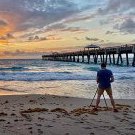
Nikon High End DSLR/Mirrorless Rumors
mercer reacted to Trek of Joy for a topic
Nikon still has a much larger market share and user base than anyone outside of Canon. They can drop a Nikon'd A7rII-type body with a LAEA style adapter or the current mount, it will be huge. The 1 Series has killer AF and they built out a lens lineup pretty quick. The blunder was the 1" sensor. But we also have the d810/d750/d600 successors coming soon and DSLR's still outsell mirrorless by quite a margin. IMO the DL's were cancelled because the resources are being shifted to move into the mirrorless segment and compete with the FF E-mount. Nikon isn't dead, funny seeing all the declarations that they're the next Kodak. Before the A7's, people were saying the EXACT same thing about Sony and how they F-ed up the A-mount and the E-mount was consumer crap.1 point -
So I know that this thread was mainly a provocation based on the "how much better is the F35" discussion in another thread but I'd like to derail it to actually take up the original post's point. Everything looks amazing and/or shit at the same time. It is borderline impossible to judge color, resolution, etc and if you don't do broadcast/cinema, I start to wonder if there's any point to obsessing over image quality. Exhibit A to prove my point: I set up all my entertainment options together with my desktop system that I use for editing/grading/destroying footage and loaded up a video on Vimeo in 1080p at exactly the same point. It is the video "Portrait of Rome" by Of Two Lands which I think is a beautiful video, showing the quality of the BMPCC. Systems to play back were the following (to satisfy @sam): iPhone 6s iPad Pro 9.7" Lenovo Y700 with 15.6" IPS panel at 3840x2160 px via Nvidia GTX 960M Connected to my desktop computer via AMD Radeon R9 390: Dell U2711 with 27" IPS panel at 2560x1440 px, calibrated with Spyder Dell P2210 with 22" TFT panel at 1680x150 px, calibrated with Spyder (but useless as the panel is crap) Panasonic Viera TH-42PZ85E 42" plasma TV at 1920x1080px (that's normaly my preview monitor via BMD Intensity Pro 4k IO card) You can already see on the first view that color is different between all systems, so no matter how much effort you put into your color correction, it's completely random what your viewers will see. But what was also blatantly obvious in this quick and unscientific comparison, but not visible on the foto above, is that even the resolution and scaling of the 1080p video was all over the place. iPhone 6s -> probably streamed in 720p from the Vimeo app, but the screen is tiny so everything nice and sharp iPad -> looked good Lenovo laptop -> scaled great, which is no hard accomplishment from 1080p to 2160p, combined with the 15.6" screen size it was really sharp and nice Dell u2711 -> totally horrific. The video scaled in an ugly way, there was quite some pixelation. Total no go. Dell u2210 -> Doesn't scale really well but it's ok, as it downscales anyway. Can live with. Plasma TV -> I hear angels singing! Image is perfect, no scaling, everything smooth and soft. I'm not sure what I learn from this, as it kinda makes all my efforts to make my material look its best futile. My main screen is the U2711 and that one makes everything look bad, I feel like 1080p just doesn't scale well to QHD, considering that the material looked way sharper on the even bigger Plasma TV. It's somewhat better with really sharp & detailed 1080p material downscaled from UHD but still a big dip in quality. So how do you handle this? What are your thoughts about producing for the web with zero control what people will see?1 point
-
I'd still rather have a Pocket or Micro before the GH5. Lovely colors with minimal post work needed to make it look cinematic, even with ProRes. I'd rather have the Micro than the Pocket, but I don't want a big rig for such a tiny camera. I can't believe someone hasn't produced some type of dummy battery or two sided battery that would place a small 3.5" monitor directly behind the micro and the camera and monitor power could be fed from the same source... or some way to adapt one of those small Canon hotshoe EVFs with an HDMI... or even one of those GoPro wrist monitors could be a cool solution as well.1 point
-
EOSHD C-LOG
neosushi reacted to Vladimir Chaloupka for a topic
Thank you for creating these Andrew, I love them! This was shot last weekend on the 1DX mark ii with the Cinema2 profile:1 point -

Camera advice. Best image, ignore rest. $3000
Liszon reacted to webrunner5 for a topic
Well don't we really want to admit you can go out and buy a BMPCC, BMCC, shoot raw, and be happy with a Lot less hassle than shooting Film for normal stuff that is not a Hollywood Feature?1 point -
The challenge with *nix is there are so many flavors (versions). Ubuntu and relatives are perhaps the mostly popular right now... What we do as software developers is download the source code for tools/apps and build for the specific version of *nix that we are using (this too can be a pain and time burner). This is great for back-end server products but not front end user-facing products. This would not be possible for mass-market commercial software like Adobe. The other challenge is UI development tools on Linux are currently very weak. Just debugging code on Linux with an IDE is currently very very weak. XCode on OSX and Visual Studio on Windows are still light years ahead of anything on Linux (Microsoft has released Code for Linux, but mostly for webapp development (not C/C++ which is needed for native apps)). Working on Linux feels like working on a Model T vs. Porsche or Ferrari on OSX and Windows respectively (Windows still has the best developer tools, by far). C++ Builder used to run on Linux, however support was dropped: https://www.embarcadero.com/products/cbuilder . This is an incredible cross-platform toolset for C++ development. They could bring it back to Linux if there was a market. The challenge with Linux is most desktop Linux users don't pay for anything, and want everything for free (and/or pirate software). Until or if major software vendors can work out a model that works for Linux users (can't be totally free), don't expect any major products to be ported to Linux. AutoDesk and Blackmagic do support Linux, however that's for very vertical market applications (renderfarms are a good use for Linux, and having many seats in a (e.g. one-off movie) production environment where the OS is free can make financial sense). I switch between OSX and Windows 10 frequently. Instead of dual-booting my 'old' 2010 12-core + GTX 980ti anymore, I built a brand new 10-core box (6950X) + GTX 1080 which I was going to make into a Hackintosh. After getting it running with Windows 10, I was so impressed with the superior font rendering, snappier GUI response, and ability to display a 4K desktop vs. OSX, as well as superior 4K editing performance and less crashes (really an NVidia driver issue- it is what it is), I dropped the idea of putting OSX on it. I use a special USB switch to switch keyboard and mouse input, and use the 2 4K Dell display's multiple inputs to switch between OSX and Windows 10 without having to reboot. Works really well in production. I still use MacBook Pros running OSX, however modern software such as vMIX (for live streaming with efficient GPU acceleration) only run on Windows (not really enough space on the internal SSD to run Bootcamp at this point. It is possible to install Bootcamp on an external drive with a bit of effort (easiest with Thunderbolt, a bit more work with USB3), see YouTube for some examples).1 point
-

My thoughts on the Kipon Medium Format "Speedbooster"
Brian Caldwell reacted to jcs for a topic
So if we focus on the art, the emotion of the combined 'lens filter', we can categorize looks so others can replicate themselves* and quit arguing about sensor size. I think Mattias' pics look cool, and if a MF->FF focal reducer plus cheap MF lenses can be used to recreate those looks, that's pretty neat- gives new love to neglected unused MF lenses * this was not meant as a cloning comment1 point -
Success is when you can post a still on instagram and get hundreds of likes without having inserted any hashtags.1 point
-
AGASCOPE - worth buying?
Justin Bacle reacted to BrooklynDan for a topic
In theory, it is worth that price because it is a professional-grade anamorphic prime lens, and similar lenses from Lomo and others have been going for about $8k. However, I think the value of this lens should take a hit because it is, of course, a one-off. The chances of building a complete Agascope set are slim to none, So that makes this lens a curiosity, rather than a functional cinema lens, and it should be priced as such. I would put it at $4-5k.1 point -

Camera advice. Best image, ignore rest. $3000
Shield3 reacted to webrunner5 for a topic
But I guess if I was a very famous director that is as old or older than I am, well they are probably dead , it would be hard to change over to digital if you have been shooting film all your career. I can see not wanting to do that.1 point -

Camera advice. Best image, ignore rest. $3000
Shield3 reacted to Tim Sewell for a topic
Based on very recent experience - Canon C100 mkii.1 point -

Cameras With 4:3 Anamorphic Mode?
Julian reacted to Ian Edward Weir for a topic
Wow Julian! Best Kowa B&H footage I think I have even seen. Thanks!1 point -
Panasonic GH5 10bit vs 8bit
Ehetyz reacted to Simon Shasha for a topic
Besides Luke, the videos released thus far have been a let down. Regarding the few points above - I do not believe one requires a 10bit monitor to see the difference. I use 8bit monitors, and my Blackmagic Pocket, when shooting 10bit 1080P ProRes HQ, absolutely decimated my Sony A7S + Shogun 4K 8bit ProRes HQ. I would bring both files into Premiere, push the grade in Lumetri, and the Blackmagic 10bit 1080P ProRes HQ held up, the A7S 4K 8bit ProRes HQ did not - banding all over the place. When I shot for Blackmagic to promote their Micro camera, I found the results even better - the new colour-science and improved sensor/ASIC showed me even more how important 10bit is. You can tell a 10bit image virtually immediately - the colours are deep, rich, have fidelity, accuracy. 8bit images always come across very "thin" and crayon-like - especially the skin-tones. I am liking the 10bit I am seeing out of the GH5, however, I do not think its true potential will be realised until we see 10bit 400Mbps for 4K, and 10bit 200Mbps for 1080P. Agreed.1 point

